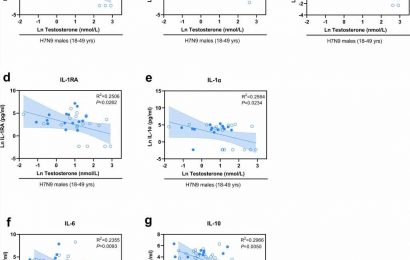
Death rates from ovarian cancer are predicted to fall by 17 percent in the UK and by 7 percent in EU countries in 2022 compared to 2017, according to new research published in the journal Annals of Oncology today.
Researchers led by Carlo La Vecchia (MD), a professor at the University of Milan (Italy), say that these dramatic falls are due mainly to the use of oral contraceptives, which also account for the differences between countries.
“The earlier and greater use of oral contraceptives in the UK than in most EU countries for generations of women born since the 1930s has a major role in these trends,” said Professor La Vecchia. “In Italy, Spain, Poland etc., oral contraceptives were made available considerably later, and hence the favorable trends in these countries started later and are smaller.”
The researchers predict that 26,500 women will die from ovarian cancer in EU countries in 2022 and 4,000 in the UK. After adjusting for differences in age distribution in the population, the age standardized rate (ASR) of deaths will be 4.32 and 4.57 women per 100,000 in the EU and UK respectively. In the 1970s, the UK had the highest death rate in Europe at nearly 9 per 100,000, but then showed a steep decline thereafter, whereas death rates in France, Germany, Italy, Poland and Spain were all lower but showed a rise until the 1980s when they started to decline with the exception of Poland where rates continued to rise until around 2010.
“Long-term use of oral contraceptives reduces the risk of ovarian cancer by 40 percent in middle-aged and elderly women,” said Prof La Vecchia. “Other factors may also be partially responsible, such as a reduced use of hormone replacement therapy. Improvements in diagnosis, surgery and the use of better treatments, such as platinum-based drugs in the 1980s, taxanes in the 1990s and more recently, gemcitabine, intra-peritoneal chemotherapy, possibly bevacizumab, and PARP inhibitors for women with BRCA mutations, may all contribute to improved survival. However, these factors are minor compared to the long-term protective effect of oral contraceptives. We expect these favorable trends in ovarian cancer deaths to continue.”
Prof La Vecchia and his colleagues predict that death rates from the 10 most common cancers will continue to fall in most European countries in 2022, although the numbers of people dying will go up due to aging populations. A greater proportion of elderly people in the population means there is a greater number at the age where they are more likely to develop and die from cancer.
There will be 1,446,000 deaths from cancer in the EU and the UK in 2022 (1,269,200 in the EU and 176,800 in the UK). This corresponds to a fall of 6 percent in men (126.9 deaths per 100,000) and 4 percent in women (80.2 per 100,000) in the EU since 2017, and 7 percent (113.2 per 100,000) in men and 6 percent (87.6 per 100,000) in women in the UK.
The main exception to the favorable downward trends is pancreatic cancer, where death rates continue to rise in women (up 3.4 percent) with little change in men (down 0.7 percent) in the EU, although in the UK they are down 5 percent in men and 2 percent in women. It has overtaken breast cancer to become the third most common cause of cancer death in the EU (87,300 deaths, with a death rate of 8.1 and 5.9 per 100,000 in men and women respectively).
Lung cancer deaths also continues to rise in EU women (up 2 percent), although the rate of increase is slowing, and womb and cervical cancers deaths are up 5 percent in UK women.
Prof La Vecchia said that “tobacco continues to play a key role and is the major cause of deaths from cancer across Europe. Smoking influences death rates from a range of cancers, including pancreatic, lung and bladder cancers. The lack of progress on pancreatic cancer should ring alarm bells with EU health institutions as survival rates are abysmal with less than 5 percent of patients surviving five years.”
Co-author, Professor Eva Negri, professor at the University of Bologna (Italy), said that “besides the decline in smoking prevalence in men, the main determinants of the favorable trends in cancer mortality are advancements in treatment and diagnosis of colorectal, breast and prostate cancer, as well as in several rarer cancers.”
The researchers analyzed cancer death rates in the EU 27 Member States as a whole and separately in the UK in order to be able to compare with previous years when the UK was still a member of the EU. They also looked at the five most populous EU countries (France, Germany, Italy, Poland and Spain) and, individually, for stomach, intestines, pancreas, lung, breast, uterus (including cervix), ovary, prostate, bladder and leukaemias for men and women. Prof La Vecchia and his colleagues collected data on deaths from the World Health Organization and Eurostat databases from 1970 to 2017, or to 2016 for the UK. This is the 12th consecutive year the researchers have published these predictions. Prof La Vecchia and his team are the only group in Europe to publish yearly predictions for all cancers, as well as the ten most common cancers.
They estimate that nearly 5.4 million cancer deaths have been avoided between 1989 and 2022 in the EU, 369,000 in 2022 alone, compared to the peak of cancer death rates in 1988. In the UK, just over a million deaths were avoided over the same period, including 73,000 in 2022.
The researchers warn that their predictions should be interpreted with caution and that they could be affected by the COVID-19 pandemic this year.
Source: Read Full Article


